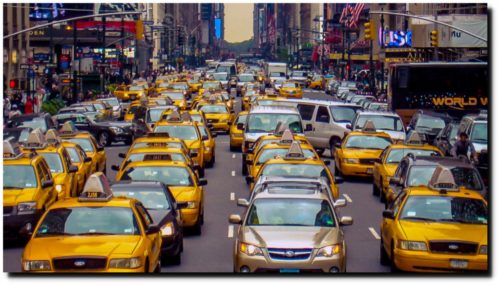
‘Marked And Steady Increase’ In Modern Penguin Abundance
Perhaps because of their unique visual appeal and heavy representation in children’s books and movies (and climate blogs), penguins may subjectively rank second only to polar bears in their polar popularity.
The Polar Bear As ‘Global Warming’ Icon
Advocates of climate alarm have historically used images of forlorn and starving polar bears stranded on melting ice floes to spur human guilt and policy action. In 2008, polar bears were even classified as endangered due to modeled expectations of their imminent demise.
 According to recently published peer-reviewed scientific papers, however, polar bears have been defying the narrative that says dangerous anthropogenic global warming (DAGW) is targeting them for extinction.
According to recently published peer-reviewed scientific papers, however, polar bears have been defying the narrative that says dangerous anthropogenic global warming (DAGW) is targeting them for extinction.
That’s because in recent decades 92% of Canadian polar bear subpopulations have remained stable or increased, leading scientists to conclude that “it seems unlikely that polar bears (as a species) are at risk from anthropogenic global warming” (York et al., 2016). Local Inuit populations even report that there are “too many polar bears now” (Wong et al., 2017).
How About Penguins?
Since the Arctic’s polar bears have not been cooperating with the DAGW narrative (by failing to die off in greater numbers), perhaps penguins, another beloved polar species, could take their place. After all, the plight of Antarctica’s penguins has not received nearly as much worldwide attention or sympathy.

But scientists have found that penguins have not been cooperating with DAGW expectations either.
In recent decades, and over the course of the last 200 years, penguin numbers have either increased or remained stable.
Penguin Population Dynamics And Climate
Scientists have historically determined that increasing Adélie penguin numbers seem to coincide with warm periods, whereas cooling periods elicit population declines (Emslie et al., 2007; Huang et al., 2009).
According to Yang et al. (2018), however, increases in penguin abundance coincide with cooling periods. They note that there were higher Adélie penguin numbers in the Ross Sea region during the Little Ice Age (the 1600s to early 1800s) than during the 19th and 20th centuries.
Interestingly, though, these scientists also found that there has been no net change in penguin population since the 1800s, a determination that would not appear to fit the perspective that modern climate changes are unprecedented or even unusual.
Furthermore, when it’s considered that there has been no significant regional temperature change between the 1880s and mid-2000s and that the Ross Sea has undergone a dramatic cooling trend (-1.59°C per decade) since 1979 (Sinclair et al., 2012), then any decreasing population trend in recent decades would necessarily coincide with a cooling rather than warming climate.
In another paper published in the journal Nature Communications a few months ago, Che-Castaldo et al. (2017) analyzed 267 Adélie penguin colonies residing on the Antarctic continent and found their numbers have undergone a “marked and steady increase“ between 1982 and 2015.
Reindeer, Perhaps?
 With both polar bears and penguins perpetually failing to support the narrative invoking deep concern about the species-depleting effects of anthropogenic global warming, perhaps a new animal icon foreshadowing the dangers of climate change will emerge at some point.
With both polar bears and penguins perpetually failing to support the narrative invoking deep concern about the species-depleting effects of anthropogenic global warming, perhaps a new animal icon foreshadowing the dangers of climate change will emerge at some point.
Reindeer are polar animals that are seasonally quite popular. Perhaps they could take the place of polar bears and penguins.
Or not.
Bårdsen et al., 2017 The Pursuit of Population Collapses: Long-Term Dynamics of Semi-Domestic Reindeer in Sweden … We investigated the population dynamics of Swedish semi-domestic reindeer from 1945 to 2012 at the reindeer herding district-level (Sameby) to identify possible population collapses or declines […] but found no evidence of large-scale reindeer population declines and no visible synchrony across adjacent populations. Our findings were unexpected as both reindeer populations and the pastoral lifestyle face increased habitat loss, predation, fragmentation and climate change.
Read rest at No Tricks Zone


















With their ability to Travel Arctic Terns see both Penguins and Polar Bears since these birds are able to fly from pole to pole every year
The similar indicators show a real statistics on the population of the polar bears and penguins. We can see the impact of the climate change on these species.
Penguins are a relative new comer to this debate. There have been many studies showing that the polar bears are thieving. By “impact of the climate change on these species” did you mean that climate change is helping them?
This is what I intended to post.
Penguins are a relative new comer to this debate. There have been many studies showing that the polar bears are thriving. By “impact of the climate change on these species” did you mean that climate change is helping them?
The Penguins are doing fine so are the Polar Bears despite what we have heard form the Greens its just like with the Northern Spotted Owls the Greens use this along fake data to shut off all logging and watch as the owls habitat gose up in smoke and frankly the Eco-Wackos need to be planting trees instead of sitting in them and cleaning up after one of their dumb Earth Day Celebrations